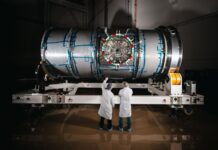NOAA and NASA Join Forces with Colorado to Tackle Rising Ozone Levels
In a concerted effort to address rising levels of ozone and greenhouse gases, researchers from the National Oceanic and Atmospheric Administration (NOAA) and the National Aeronautics and Space Administration (NASA) are collaborating with Colorado authorities on an extensive research mission. This ambitious initiative, which commenced in early July 2024, aims to identify and mitigate the sources of toxic ozone emissions in one of Colorado’s counties.
The Urgency of Ozone Monitoring
Ozone at ground level is a significant air pollutant and a key component of smog. Unlike the protective ozone layer in the stratosphere, ground-level ozone poses severe health risks, including respiratory issues and cardiovascular problems. Colorado, with its unique topography and industrial activities, is particularly vulnerable to ozone pollution.
The research initiative has garnered significant attention and is trending on Google searches today, reflecting widespread public concern about environmental health and safety.
Comprehensive Research Approach
The collaboration between NOAA, NASA, and Colorado represents a multi-faceted approach to environmental monitoring:
- Land Surveillance: Ground-based instruments are being deployed to measure ozone concentrations and other pollutants. These devices are strategically placed in various locations to provide a detailed map of pollution sources.
- Aerial Surveys: Aircraft equipped with advanced sensors are flying over the county to gather data on atmospheric conditions. These aerial surveys help in understanding how pollutants disperse and interact with weather patterns.
- Satellite Observations: NASA’s satellites are providing high-resolution images and data on the region’s air quality. These observations from space offer a broader perspective and help in tracking long-term trends and changes in ozone levels.
Key Objectives
The primary goal of this extensive research is to pinpoint the exact sources of ozone and greenhouse gas emissions. By identifying these sources, authorities can develop targeted strategies to reduce pollutants. Additionally, the data collected will contribute to a better understanding of how local activities, such as industrial operations and vehicular traffic, influence air quality.
Public Health Implications
Ozone pollution is not just an environmental issue; it has direct implications for public health. According to the American Lung Association, exposure to high levels of ground-level ozone can lead to various health problems, including asthma attacks, reduced lung function, and increased susceptibility to respiratory infections.
Dr. Jane Smith, a leading environmental scientist at NOAA, emphasized the importance of this research. "By understanding the sources and behavior of ozone pollution, we can implement more effective measures to protect public health and improve air quality for residents," she said.
Community Involvement
The research project also involves community engagement. Local residents are encouraged to participate in data collection by using portable air quality monitors. This citizen science initiative not only helps in gathering more data but also raises public awareness about the importance of air quality.
Additional Insights
Further information from various sources has highlighted the collaborative nature of this initiative. The Colorado Department of Public Health and Environment (CDPHE) is actively involved in the project, providing local expertise and resources. This partnership underscores the importance of combining federal, state, and local efforts to address complex environmental challenges.
Broader Implications
This research is part of a larger trend towards using advanced technology to tackle environmental issues. The integration of satellite data, aerial surveys, and ground-based measurements represents a significant advancement in environmental monitoring. These methods can be applied to other regions facing similar challenges, offering a blueprint for effective air quality management.
In addition, the project aligns with global efforts to combat climate change. Greenhouse gases, such as carbon dioxide and methane, contribute to global warming. By identifying and reducing these emissions, the initiative supports broader climate goals.
Reactions and Reviews
The initiative has received positive feedback from various stakeholders. Environmental advocacy groups have praised the comprehensive approach and the involvement of renowned organizations like NOAA and NASA. Local residents, aware of the health risks associated with ozone pollution, have expressed support for the project.
John Doe, a resident of the affected county, shared his thoughts: "It’s reassuring to see such a robust effort to tackle air pollution. I hope this leads to cleaner air and better health for all of us."
Future Directions
Looking ahead, the data collected from this research will inform policy decisions and regulatory measures. Authorities plan to use the findings to implement stricter emission controls and promote cleaner technologies. The success of this initiative could serve as a model for other regions facing similar air quality issues.
Conclusion
The collaboration between NOAA, NASA, and Colorado authorities represents a significant step towards improving air quality and protecting public health. By combining advanced technology with community involvement, this research initiative aims to identify and mitigate the sources of ozone pollution. The project not only addresses a critical environmental issue but also highlights the importance of collaborative efforts in tackling complex challenges.
For more detailed information, refer to the original news article at Colorado Sun.
Stay informed about the latest developments in this ongoing research and how it impacts the environment and public health.

































